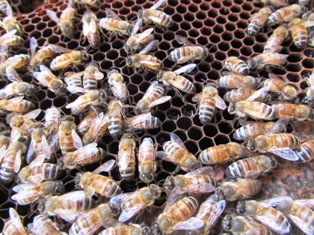Getting Stung Is No Fun!
Working outside in my garden, I heard a loud buzz next to my ear and felt a searing pain at the site where my cheek and ear meet. I wouldn’t swat at the bee. I didn’t actually see it. But, boy, did I feel it!
I dashed into the house and my husband removed the stinger. I put an ice cube into a napkin and rubbed the site for a few minutes until the pain subsided. I also took a an antihistamine tablet with diphenhydramine, the active ingredient in Benadryl™.
Here are a few helpful tips if you or someone you know gets stung.
Remove the stinger as soon as possible. The longer the stinger is left in place, the more venom is injected. Use your fingernail or tweezers to get it out.
The application of ice will keep down the swelling. For people over 18 with pain from a bee sting, give acetaminophen or ibuprofen.
Antihistamines can help with the itchiness associated with a bee sting.
For severe reactions or for people allergic to bee stings, seek immediate emergency assistance. Symptoms can include difficulty breathing. rapid heartbeat, tightness in the throat, hoarseness, and anxiety.
If the person stung has a history of anaphylaxis and possesses a doctor-prescribed emergency dose of epinephrine, have him inject the dose or do it for him if the individual cannot.
Tags: allergic reaction, bee sting, stinger
 Facebook
Facebook Goodreads
Goodreads LinkedIn
LinkedIn Meera Lester
Meera Lester Twitter
Twitter




